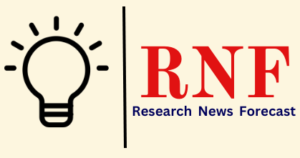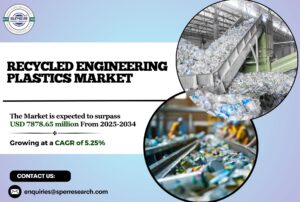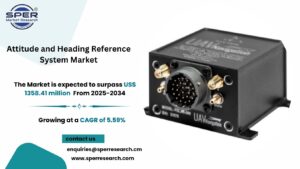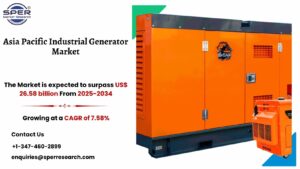Middle East and Africa Carbon Black Market Share, Growth Drivers, Upcoming Trends, Business Opportunities and Future Investment Strategies 2033: SPER Market Research

The “MEA Carbon Black Market” analysis shows that the market will develop steadily and strongly between 2024 and 2033, with forecasts pointing to continued expansion through that year. The growing need for eco-friendly and sustainable products is a notable trend in the MENA Carbon Black Market.
Carbon black is vital for increasing the electrical and mechanical properties of robust polymeric materials, especially long-lasting elastomers like rubber. Its widespread use in the production of reinforcing and pigment components for automotive tires stems from its ability to extend tire life by decreasing heat deterioration. The materials used in automobile tire manufacture have a considerable impact on both the comfort and safety aspects of vehicle design. When carbon black is added to tire rubber, it significantly improves tensile strength and abrasion resistance.
According to SPER market research, ‘Middle East and Africa Carbon Black Market Size- By Process Type, By Application – Regional Outlook, Competitive Strategies and Segment Forecast to 2033’ state that the Middle East and Africa Carbon Black Market is predicted to reach USD 630.31 million by 2033 with a CAGR of 3.85%.
Saudi Arabia is a major importer of synthetic rubber from the Middle East and Africa. The country plans to increase domestic production in order to reduce reliance on imported synthetic rubber. This is projected to provide a lucrative opportunity for vehicle makers to use locally made synthetic rubber at a lower cost.
Top Middle East and Africa Carbon Black Market Companies
- Abu Dhabi National Oil Company
- Aditya Birla Group
- Cabot Corporation
- Continental Carbon Limited
- Epsilon Carbon Private Limited
- Imerys Graphite & Carbon
- Omsk Carbon Group
- PCBL Limited
- Orion Engineered Carbons GmbH.
Drivers: Tire production has expanded dramatically across the MEA region due to rapid economic expansion, urbanization, and increased car ownership. Given carbon black’s critical significance as a reinforcing element in tire production, increased tire manufacturing means increased carbon black usage. Furthermore, government investments in infrastructure projects are driving up demand for rubber products like hoses, belts, and seals, leading in increased carbon black usage. Despite limited domestic production capacity, the MEA region’s automotive industry is quickly growing, particularly in the passenger and commercial vehicle segments. This rise closely correlates with rising demand for tires and other rubber components, propelling the carbon black industry forward.
Request For Free Sample Report @ https://www.sperresearch.com/report-store/middle-east-and-africa-carbon-black-market.aspx?sample=1
Restraints: The carbon black production process is heavily reliant on feedstocks like crude oil. Oil price fluctuations can have a significant impact on production costs, affecting the overall affordability of carbon black for producers. Recent global supply chain disruptions induced by geopolitical tensions and logistical hurdles have made it more difficult to secure continuous feedstock supplies or acquire finished products, putting market stability at risk. The reliance on imports for critical raw materials exacerbates these challenges, particularly in regions such as the Middle East and Africa where domestic manufacturing capability is restricted. Furthermore, the carbon black industry is facing growing scrutiny because to environmental concerns such as air pollution and greenhouse gas emissions. Carbon black production methods can emit pollutants, prompting regulators to tighten environmental restrictions.
The COVID-19 epidemic had a negative impact on the carbon black market in the Middle East and Africa region because the tire and rubber sector suffered significant harm. However, the vehicle category is expanding, which will help drive market development. In the Middle East and Africa, the Carbon Black market has rebounded from the pandemic and is rapidly expanding.
Middle East and Africa Carbon Black Market Segmentation:
By Process Type: Based on the Process Type, Middle East and Africa Carbon Black Market is segmented as; Furnace Black, Gas Black, Lamp Black, Hexamine, Thermal Black.
By Application: Based on the Application, Middle East and Africa Carbon Black Market is segmented as; Tires and Industrial Rubber Products, Plastics, Toners and Printing Inks, Paints and Coatings, Textile Fibers, Others.
By Region: This research includes data for Saudi Arabia, South Africa, United Arab Emirates, Rest of Middle East and Africa.
This study also encompasses various drivers and restraining factors of this market for the forecast period. Various growth opportunities are also discussed in the report.
For More Information, refer to below link:-
Middle East and Africa Carbon Black Market Size
Related Reports:
Follow Us –
LinkedIn | Instagram | Facebook | Twitter
Contact Us:
Sara Lopes, Business Consultant – U.S.A.
SPER Market Research
+1-347-460-2899





